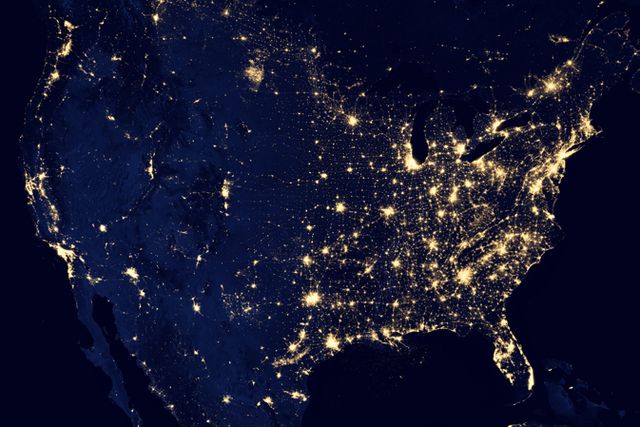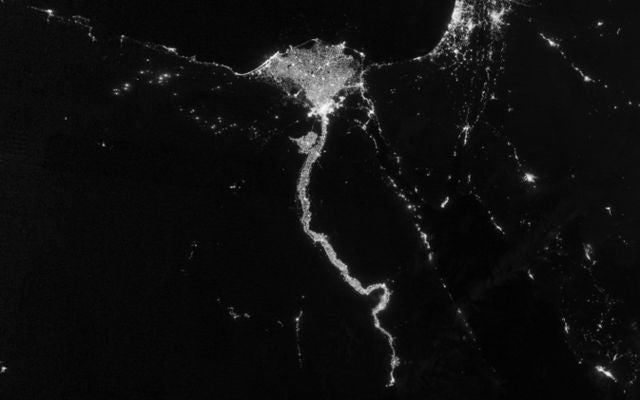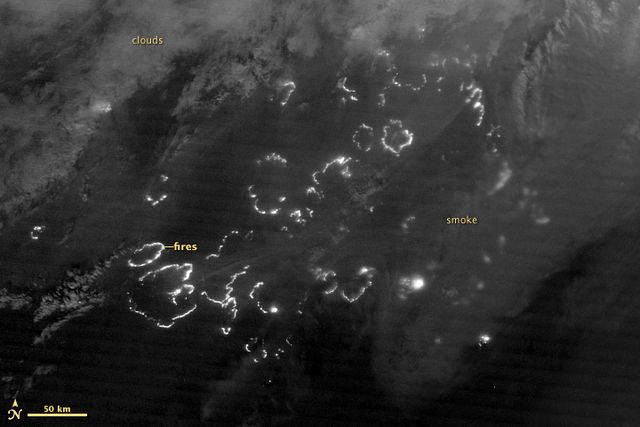https://www.youtube.com/embed/Q3YYwIsMHzwA cloud-free view from space as acquired by the Suomi National
Polar-orbiting Partnership Satellite (Suomi NPP). Over nine days in April and thirteen days in
October 2012, it took 312 satellite orbits and 2.5 terabytes of data to
get a clear shot of every parcel of land surface.
For roughly a year, NASA has been using a satellite sensitive enough to detect and capture a picture of the light coming from a single ship at sea or a lone light on the highway. The employs a day-night band sensor that can analyze and adjust the amount of light in individual pixels and then put them together to create one sharp, stunning image of the earth at night. “Unlike a camera that captures a picture in one exposure, the day-night
band produces an image by repeatedly scanning a scene and resolving it
as millions of individual pixels,” NASA said in a . “Then, the day-night band reviews the
amount of light in each pixel. If it is very bright, a low-gain mode
prevents the pixel from oversaturating. If the pixel is very dark, the
signal is amplified.”

It's not just that the NPP sensor is sensitive enough to detect artificial lights. It can also capture the light created by auroras or moonlight reflected in the earth's atmosphere, gas flares, and forest fires. Experts have already employed the satellite's images for a number of practical reasons. They used them to study in New Jersey on October 29, the that resulted along the coasts of New York and New Jersey after the storm, the movement of forest fires at night in Siberia, and NOAA's Weather Service used the images to detect fog rolling into San Francisco Bay on November 26—which led to flight delays and cancellations.

Scientists have of the earth at night from space for roughly four decades, but the new technology allows them to capture images with a and than anything used before. They also have easier and faster access to images of the earth at night because the satellite is part of a civilian science satellite—they can see results in minutes or hours.

“The night is nowhere near as dark as most of us think. In fact, the earth is never really dark,” , an atmospheric scientist at Colorado State University. “And we don’t have to be in the dark about
what is happening at night anymore either.”
—Joe Spring